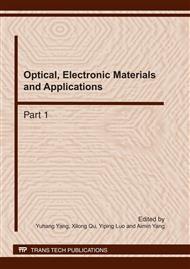p.1
p.6
p.11
p.16
p.21
p.25
p.29
p.34
p.39
Numerical Simulation and Optimal Design of a Novel Actuator Made of the Orthotropic Piezoelectric Composite Material
Abstract:
As a novel functional composite material, orthotropic piezoelectric composite material has been developed into various transducers used in the non-destructive technology and the structural health monitoring in aviation engineering, mechanical engineering, and civil engineering. In this study, the configuration and the mechanics-electric coupling property were described. A concept of the orthotropic ratio was proposed to derive the optimal length-to-width ratio of an actuator made of the orthotropic piezoelectric composite material. From the optimal length-to-width ratio, an optimal design method of the type 1-1 actuator, made of the orthotropic piezoelectric composite material, was advised. The mechanics-electric property of the type 1-1 actuator of orthotropic piezoelectric composite material designed by this approach was simulated with the software COMSOL under different actuating voltages. The modeling results were validated by experiments. It was evident that the results of numerical simulation were good agreement with that of experiments.
Info:
Periodical:
Pages:
21-24
Citation:
Online since:
March 2011
Authors:
Price:
Сopyright:
© 2011 Trans Tech Publications Ltd. All Rights Reserved
Share:
Citation:


